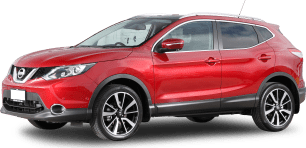Right from the entry level version of the Sportage, this SUV is spot on for everyday practicality, with a load of features that will be used regularly – and a lack of gizmos that will be ignored.
The 7.0-inch infotainment screen is one of the standard features across the range, and can be controlled either by a touch or via a clear, concise and easy-to-operate line of buttons on the centre console – though the deep-set screen means it can be a stretch to reach it.
A pair of traditional dials brackets a small digital screen in the centre of the dash. Again, it's a real nod to simplicity and ease of use. The steering wheel controls are comprehensive, even on the base Si, but again they are simple to understand and use.
Storage spaces are plentiful and clever in the Sportage, too. Two cup holders are in the centre console, there's room for larger bottles in all four doors, as well as a pair of (slightly small) cup holders in the centre rear armrest.
There's 466 litres of boot size with the seats up – more, in terms of boot space dimensions, than the Mazda CX-5.
A pair of ISOFIX baby seat mounts are fitted on the rear outboard seats, but the centre rear sash belt is mounted in the ceiling. It needs to be disconnected if you want to make the most of the large cargo space, which is a pain, to be honest. It diminishes from the car's otherwise good practicality.
If you're running a kid's sport team, there's one question you'll undoubtedly have; how many seats does a Kia Sportage have? Just five, and there's no option for a third row.
The 60/40 split rear seats flop down quickly and firmly with the pull of a lever on the sides of the seats. There's 466 litres of boot size with the seats up – more, in terms of boot space dimensions, than the Mazda CX-5 – and 1455 litres of luggage capacity in the down position.
One small annoyance is a lack of auto-up on the passenger side front window in the entry-level Si, but it's common across a lot of Kia and Hyundai cars.
There are plenty of places to charges phones and tablets across all Kia Sportage models, with a pair of 12 volt sockets for rear-seat passengers and a pair for the front, as well as USB and auxiliary in ports.
Apple CarPlay and Android Auto is coming for the Si, we're told, and will be able to be retrofitted by dealers with a simple software upgrade. This allows you to use your phone like an MP3 player, amongst other functions.
There's no CD player or digital radio for the sound system, though the standard speakers are surprisingly impressive. The GT Line also gets an inductive phone charging tray.
Despite the Sportage being a medium SUV in size, it fits four adults in absolute comfort and ease.
A cargo net and tie-down hooks are included in the cargo area of SLi and above models, and there's a full-sized spare underneath the boot floor. There are also LED lights throughout the cabin.
Despite the Sportage being a medium SUV in size, it fits four adults in absolute comfort and ease, and five when required; three kids across the back is no problem. The driving position is slightly higher than expected, but it's still perfectly suited to both small and tall drivers.
The full-length glass sunroof of the top-spec GT Line doesn't affect head height, but it also doesn't slide back; it only tilts up.
Controls in the GT-Line for oft-used switches like lane departure and blind spot warning systems, and even the illumination controls for the dashboard are well placed, rather than being buried in the multimedia system menu. The top-spec car also gets an electronic handbrake.






.png)










































.png)





















 copy.png)














